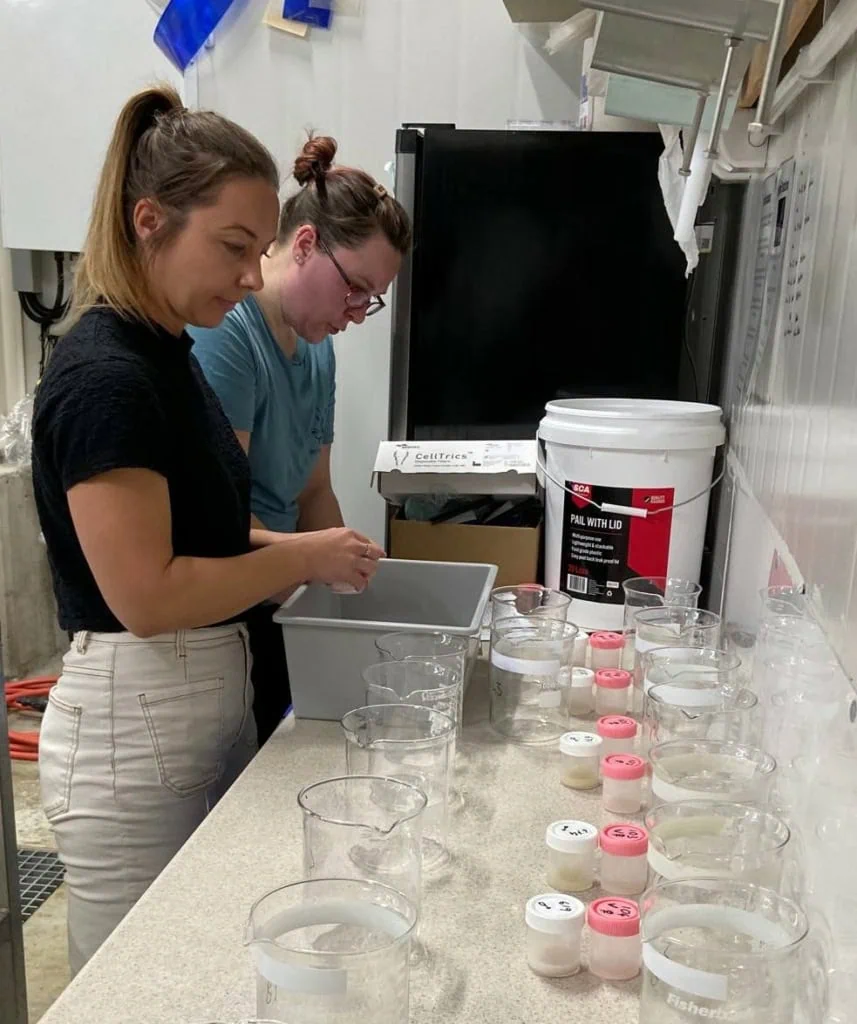
Above, Cawthron Geneticist Dr Megan Scholtens and Research Assistant Dr Jordan Elvy perform crosses for selective breeding of Pacific oysters (Crassostrea gigas) by mixing precise quantities of eggs and sperm to create ‘biparental families’ (i.e. a family of siblings from the same two parents).
Introduction
Over the past 40 years New Zealand aquaculture has grown into a significant industry. Tonnage is small on a global scale, but the industry has built an international reputation for the supply of high-quality seafood to many overseas markets. Since the 1990s the industry has recognized the potential gains from selective breeding and the challenge has been to develop breeding programmes that can overcome biological obstacles (such as larval rearing and mortality) and operate cost-effectively on a relatively small scale while still providing significant gains in multiple traits of economic value.
Cawthron’s unique relationship with industry partners has played a pivotal role in their breeding programmes.
We work closely with organisations like SpatNZ, Te Huata, and Moana NZ to optimize Greenshell™ mussel and Pacific oyster genetics. Within the Shellfish Aquaculture Research Platform, the team performs research that is aligned with industry needs and goals to produce results that are applicable and implemented into commercial breeding programmes.
Cawthron has developed selective breeding programmes for several species in Aotearoa New Zealand including Pacific oysters and Greenshell™ mussels (Symonds et al., 2019).
Cryopreservation helps support selective breeding
The selective breeding research supported by the ShARP platform has been underpinned by decades of groundbreaking cryopreservation research that has augmented and enabled the various selective breeding programmes by creating reliable methods to cryopreserve eggs, sperm and larvae of both Greenshell™ mussels and Pacific oysters. This ‘cryobank’ material can then be used in combination with fresh material provided by multiple generations of living adult ‘broodstock’.
For some detailed papers on these cryopreservation techniques check out these papers from ShARP researchers: Adams et al. 2008; and Heres et al. 2020.
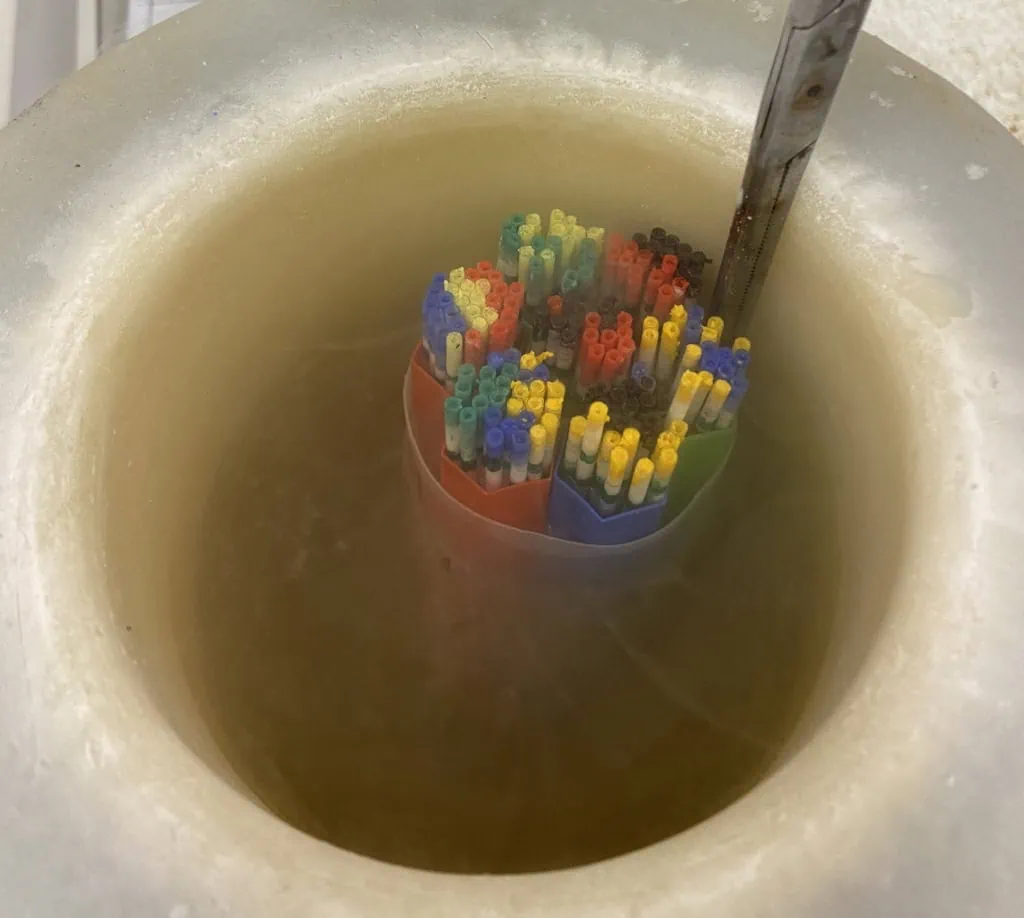
Above, straws of shellfish gametes (eggs and/or sperm) are held in a ‘cryobank’ under liquid nitrogen for future breeding
Selective breeding programme development for different species
1. Pacific Oysters (Crassostrea gigas)
Since 1999, Cawthron has been pioneering selective breeding for Pacific oysters, and this has enabled the NZ industry to shift from a complete reliance on wild spat. This became increasingly significant when the viral disease Ostreid Herpesvirus-I (OsHV-1) devastated the industry in 2010, reducing production by over half. Cawthron’s research led to the rapid development of selectively bred oysters that are resistant to the virus (Camara et al., 2017; Delisle et al., 2022). Cawthron researchers also developed techniques to produce triploid oysters “3N” which have three sets of chromosomes instead of the usual two “2N”. Triploids are used globally as they grow faster and fatter than diploid oysters and are harvestable all-year round (Vignier et al., 2024).
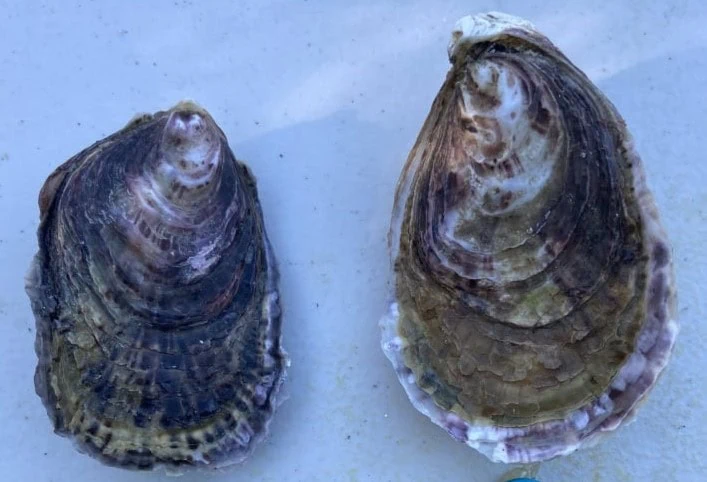
One year old Pacific oysters (Crassostrea gigas) that are diploid (two sets of chromosomes or 2N, left) and fast-growing triploid (3 sets of chromosomes or 3N, right) grown under the same conditions.
Now, over half of all oysters in NZ are selectively bred triploids, with superior consumer and production traits, and resilient to the oyster herpes virus (OsHV-1).
Other research has investigated the potential trade-offs between the two main techniques of triploid production, which are 1. chemical induction and 2. mated triploids obtained by mating diploids (2N) with tetraploids (4N). This work compared the performance of selectively bred triploid Pacific oysters made using both techniques, relative to their diploid counterparts, in diverse farm environments (see Vignier et al. 2024).
With more intense and frequent climatic events, the oyster industry is now facing new challenges such as massive die-offs associated with freshwater run-off after major storm events. Breeding climate change-resilient oysters is thus becoming an urgent priority. Our research is showing that survival of low-salinity (freshwater) is significantly influenced by genetics, in both lab trials and on farms, which is paving the way for breeding even more resilient oysters.
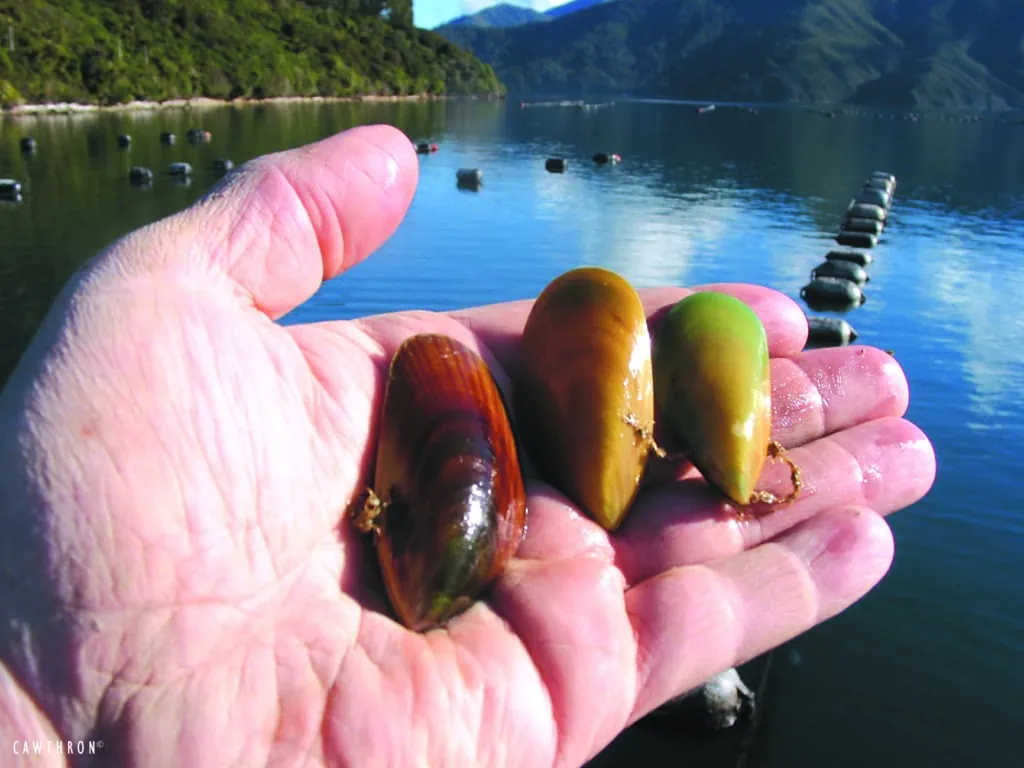
Greenshell™ mussels (Perna canaliculus) showing some of the different shell-colours observed across different families.
2. Greenshell Mussels (Perna canaliculus)
Since 2002, Cawthron has been selectively breeding Greenshell™ mussels, aiming to enhance the productivity, efficiency, quality and profitability of the Greenshell™ industry. Although the industry still relies predominantly on wild-caught juveniles (spat), this breeding programme has significantly improved the growth and market value of mussels. Breeding has focused on producing fast growing, resilient and high-yielding mussels suited to the predominant export ‘half-shell’ product. As well as selection for established commercial traits, the programme continues to evaluate additional traits to assess their future potential for selection and to understand the physiological changes in the mussels in response to breeding. With increasing water temperatures, our team has been investigating the potential to select for thermal tolerance in Greenshell™ mussels. Using a heatwave survival screening tool developed by the ShARP team, we screened families for thermal tolerance, gaining valuable insights into the genetic interactions and trade-offs between production traits and survival. We also recently published a study (Ericson et al., 2024) that explores the immune response, microbiome, and gene expression of selectively bred mussels exposed to heat stress. This multi-disciplinary research helps to inform our work with industry partners, providing valuable insights for future breeding strategies for climate resilience.
In addition to the well-established breeding programmes, we continue to provide support to the Te Whānau-ā-Apanui selective breeding programme which has been running since 2021 and has successfully produced a base population of genetically diverse families of Greenshell™ mussels to support their hatchery development aspirations.
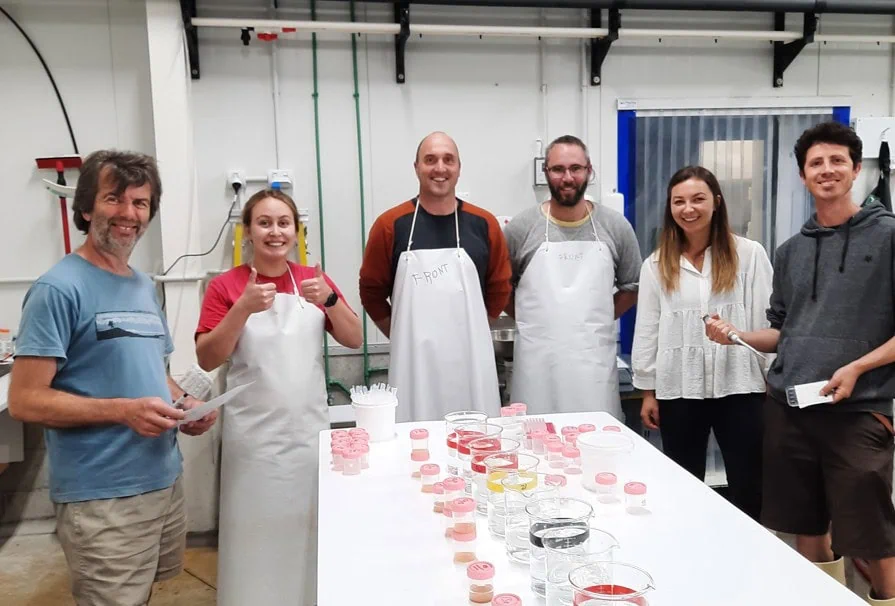
Above: Staff from Cawthron and Te Huata Research Ltd, Te Whānau-ā-Apanui in 2021 working together to complete the first ‘family run’; making new families of Greenshell™ mussels (Perna canaliculus) for the Te Whānau-ā-Apanui Greenshell™ mussel breeding programme.
Our innovative approach to selective breeding, enhanced by genomics approaches (Gutierrez et al., 2020) and strong industry partnerships, have made a substantial impact on New Zealand’s aquaculture sector and are poised to support a resilient future. We assist farmers in developing and managing custom breeding programmes, supported by our technical teams with expertise in husbandry and rearing practices. For more information on Cawthron’s breeding services click here.

Contact Dr Megan Scholtens
Aquaculture Scientist, Genetics and Data Analysis – Cawthron Institute